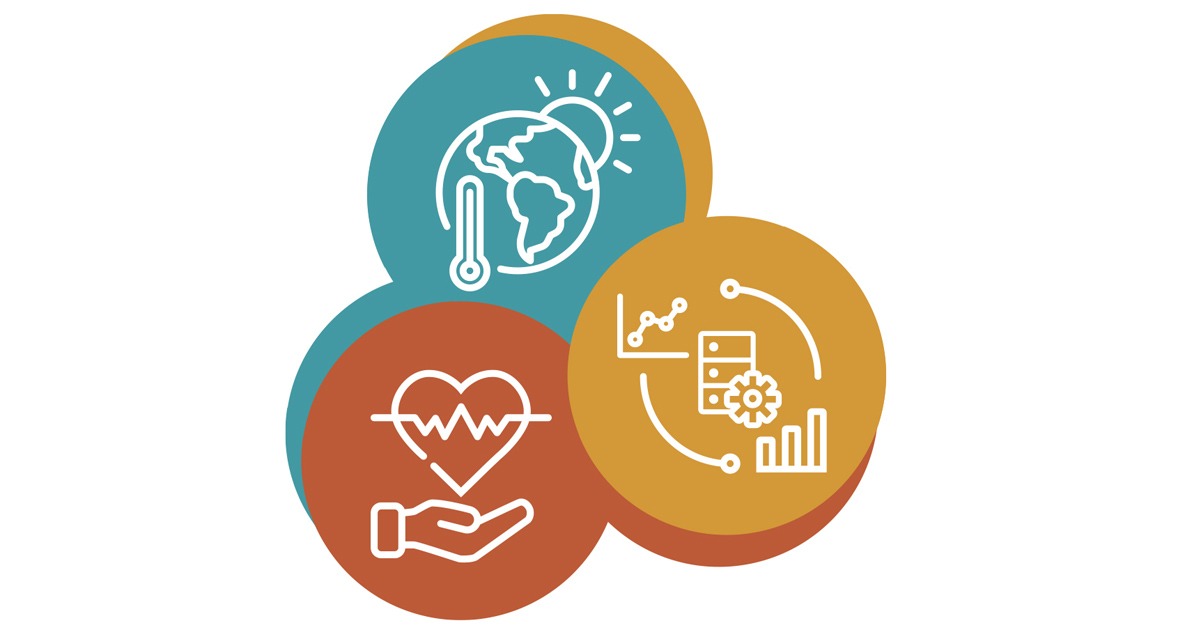A new website of data resources, tools, and training materials that can aid researchers in studying the consequences of climate change on the health of communities nationwide is now available. At the end of July, NIEHS launched the Climate and Health Outcomes Research Data Systems (CHORDS) website, which includes a catalog of environmental and health outcomes data from various government and nongovernmental agencies.
“This project is fundamentally a way for this institute and others to come together to empower the use of environmental determinants of health,” says Aubrey Miller, M.D., deputy director of scientific coordination at NIEHS. “We’re seeing climate change and health disasters around the country increasing in frequency and severity, so the need is greater than ever.”
The resource is one of a few planned as part of a three-year, $4 million project funded in 2023 by the Patient-Centered Outcomes Research (PCOR) Trust Fund. NIEHS competed with other agencies for the funding to build up data systems that will improve patient or population health. The website, and its catalog of publicly available datasets, and the CHORDS project are part of the NIH Climate Change and Health Initiative (CCHI), an effort focused on addressing the health effects associated with a warming planet.
What’s available
The website provides a few resources of interest, including a catalog of data resources to aid researchers in finding relevant data for their specific research projects; an online training toolkit that provides tutorials and walk-throughs of downloading, integrating, and visualizing health and environmental data; a listing of publications of note on wildfire and health research; and links to existing resources, such as the NIEHS climate change and health glossary and literature portal.
The catalog includes a listing of dozens of data resources provided by different federal and state environmental and health sources. Users can sort the listing based on environmental and health measures of interest — such as specific air pollutants or chemicals — from data providers including NASA and the U.S. Environmental Protection Agency with many more to come.
In addition, users can search the catalog by keyword, such as “PM2.5,” which is a measure of air pollution, and the population studied. They can then drill down into the information available and narrow their results to specific domains such as environmental justice, climate change, or electronic health records.

What’s next
Over the next year and a half, the CHORDS team plans to expand their efforts. The group will be adding additional resources to its catalog and expanding the content in the training toolkit. Members of the team, as well as collaborators, have been developing new software tools, such as the open-source amadeus R-package to aid researchers in downloading, processing, and calculating environmental and climate exposure metrics. These tools, plus an ecosystem of environmental and climate analysis tools, are available or in development, and the website will be updated to guide users to the tools.
The new software tools will also be used to generate standardized environmental data sets that health researchers will be able to readily add to their own research projects. In addition, the CHORDS team will be publishing a use case on wildfire and health outcomes that builds upon the catalog, tools, and datasets and helps to demonstrate the use of the CHORDS resources.
The CHORDS team, which has been working closely with a technical expert panel, will also be reaching out to the research community for feedback.
“We’d like to make sure that we’re doing the best that we can, representing other resources, getting input on how to improve, and asking what we might be missing,” says Charles Schmitt, Ph.D., director of the NIEHS Office of Data Science. “We’d like to collaborate with people on additional resources and point people to where they can go to get additional information.”
(Susan Cosier is a contract writer for the NIEHS Office of Communications and Public Liaison.)
Source link
factor.niehs.nih.gov

